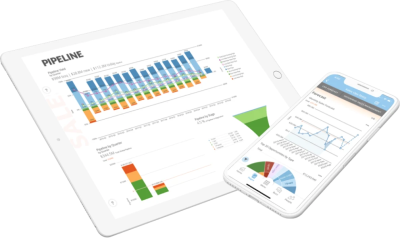The benefits of a SQL dashboard tool
Introduction
Structured Query Language (SQL, commonly pronounced like the word ‘sequel’) is a sophisticated programming language for interacting with databases and retrieving information. However, its true potential is seen when you utilize that data to construct dynamic, real-time dashboards that provide you with a glimpse of your company’s health. This is all made feasible by SQL dashboard tools.
SQL is so vital to current business intelligence (BI). SQL dashboard tools use cutting-edge technologies to fully exploit SQL’s capabilities and make the data work for you.
What do SQL dashboard tools entail?
A SQL dashboard tool is a single business intelligence (BI) tool (or a feature inside a larger BI platform) that guides you through the process of searching, exploring, and visualizing data. The result is a dashboard with interactive, dynamic charts and graphs that help you analyze and convey trends and insights.
Because SQL plays such an important part in business intelligence, one of the fundamental objectives of BI systems is to assist users in querying, exploring, and visualizing data using SQL. So, while SQL dashboard tools could be standalone tools, they may refer to a feature of bigger BI platforms when they are mentioned.
In any case, the SQL dashboard solution must enable users to query, explore, and display data.
A SQL dashboard tool links to one or more data sources to allow you to query the information. It then gives you a place to write SQL to communicate with the database and retrieve data.
To query data efficiently, you’ll need to know how the data is arranged and be able to freely explore it. Many SQL dashboard tools allow you to browse the schema (how you structure and refer to your data in a database), as well as run queries and move through results before viewing them.
Then the good times begin. The results of these queries can be shown on a dashboard as numbers, dynamic charts, or graphs. Once you get the data you need, there are usually a plethora of possibilities for dashboard theming and customization.
What is the function of a SQL dashboard tool?
There are several things to look for in a SQL dashboard tool to see if it’s the right fit for your business. Overall, it should be able to connect to a variety of data sources, enable you to analyze data, assist you in writing better SQL, and enable you to generate excellent dashboards.
Connect to a large number of data sources quickly and easily
The SQL dashboard tool will allow you to fetch and query data. This necessitates a broad data source integration library that will help you get to work faster.
You should ideally search for more integrations than you presently require. You might outgrow your present data storage system in the future and need to make some changes. The procedure will go much more smoothly if the SQL dashboard application can handle that change.
You should look at the procedure of connecting a new data source in addition to numerous data sources. The quicker you get to the real business of querying, examining, and visualizing the data, the easier the SQL dashboard tool simplifies it.
Explore your data with ease
To run a query, you’ll need to know the names of schemas, tables, columns, and other items. A good SQL dashboard solution will allow you to view and arrange your data in a graphical user interface so that you can simply refer to and alter these names while running queries.

An effective SQL dashboard tool offers a variety of benefits
Customizable schema
This will show you how to accurately refer to your data, as well as how to alter names, arrange data sets together, and much more.
SQL version control
This will assist your team in managing SQL code updates and restoring prior versions if necessary.
Formatting and autocomplete
SQL syntax is known to be somewhat difficult to work with. As a result, writing out queries manually can be a time-consuming and difficult process. This tedious job will be handled by a SQL editor featuring autocomplete and automatic formatting.
Simplicity for non-technical users
The entire value of a SQL dashboard solution is realized only if everyone in the company can query and display data.
There would be a tremendous bottleneck in the knowledge flow if data analysts were the only ones who could create dashboards. A decent SQL dashboard solution will allow non-technical personnel, such as the sales team, to query data independently without disrupting others’ work.
Customizable and dynamic dashboards
The most enjoyable aspect of the process is designing stunning dashboards that deliver real value through insights. An SQL dashboard tool ought to generate dynamic and interactive visualizations from your queries that are simple to drag, drop, and modify. When we say dynamic and interactive, we imply that your visualizations and charts respond to changes in your queries as well as any changes you make to the data. Additionally, there are a variety of cosmetic options to customize the style of your dashboard to fit your company’s brand.
Which SQL dashboard software should I use?
Finally, the size of your firm and the technical expertise of your team will determine the SQL dashboard tool you use. There are numerous tools to choose from on the market.

Creating a SQL dashboard
Once you select and implement a certain software, it’s simple to make database reports and SQL dashboards. These generic steps for creating SQL dashboards are just a starting point, but you may need to add additional steps depending on the tool you choose:
1. Establish KPI metrics
The initial step is to figure out the key performance indicator (KPI) metrics you’ll need in the SQL dashboard. Conduct multiple rounds of discussions with your team to select which performance measures should be displayed on your dashboard. You may already be measuring a variety of performance data across many systems and technologies–utilize them.
2. Make a SQL query
Many SQL queries are already being conducted in your team to generate various database reports in Workbench, CSV, Excel, and other applications.
Collect all of these SQL queries and make a SQL query list to run in the SQL dashboard program.
Create SQL queries for any new metrics that are discovered.
SQL reporting tools often allow you to compose SQL queries, run them with a single click, and present the results using various visualizations like tables, line charts, and pie charts.
The SQL queries you build can often be saved and used at another time.
3. Select the appropriate visualization
It’s critical to use the correct visualization for each KPI indicator when building SQL dashboards so that consumers can understand the data. Otherwise, it may perplex or even mislead users.
4. Build the dashboard
Finally, you must organize the KPI measurements on the SQL dashboard in such a way that users can quickly gain insights and make smarter choices.
Organize your KPI metrics into tiers based on importance. The most significant and urgent indicators should be displayed bigger and toward the top, followed by trends, comparisons, and distributions, then detailed table details towards the bottom.
Conclusion
SQL dashboards make it simple to display data utilizing SQL queries, graphs, and charts, and analyze them in an interactive, web-based dashboard which you can share. If you’re looking for a SQL dashboard tool, you should know why they’re vital and what to look for. If you make the right decision, you’ll be investing in technology that has the ability to completely revolutionize your company.
Check out some related resources:

Guide to ETL Data Modeling: Process, Techniques, and Best Practices

The 11 Best Big Data Analytics Tools in 2025






